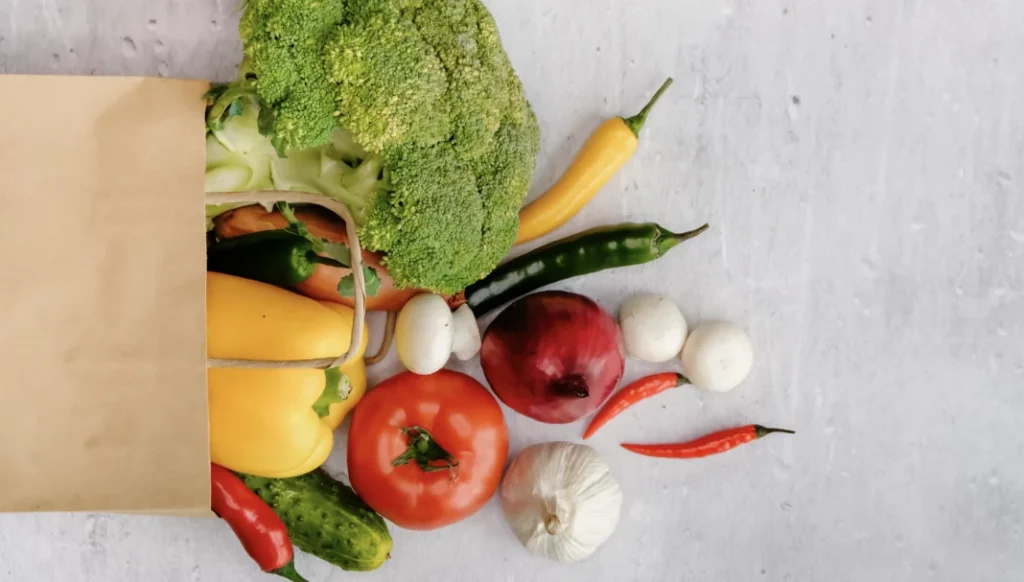Most people who meet the earnings prerequisite are entitled to the Supplemental Nutrition Assistance Program (SNAP), previously called the Food Stamp Program. But what determines the level of your home SNAP benefit is your earnings, plus some specific expenses. Also, you may be eligible for some deductions when your food stamp benefits and household income are looked into.
In this article, you’ll learn everything you need to know about SNAP, including what makes you eligible, what factors are considered for food stamps, and how you should go about it. Let’s dive right in!
What is a food stamp (SNAP)?
Food stamps (SNAP) is a government aid program that is issued by the USDA to provide funds for qualified low-income families to buy healthy food. This is to reduce the level of starvation and give greater access to nutritious meals.
SNAP benefits are allocated through the Electronic Benefit Transfer Card (EBT). It is used to buy suitable food items from authorised traders, like supermarkets.
What determines your eligibility for food stamps?

Specific bills are considered for an individual in the determination of food stamps. This will affect the level of SNAP benefits that you’ll get.
Eligible bills
Here are some of the bills that have been looked into.
Rent or mortgage payments
This is one of the basic bills that is considered for SNAP eligibility. The amount you pay for your housing is a vital factor that determines your SNAP eligibility status. Rebates and mortgages can be counted as qualified. However, it may be only a part of the housing expenses that will be considered for stamp food eligibility.
Utility Bills
Utility bills like water, electricity, and gas are important bills that are considered for SNAP eligibility. They are bills that largely contribute to having a healthy and secure environment. You should also know that nonessential utility bills include the internet or cable, which are not considered eligible for food stamps.
Medical payments
Medical expenses also play a notable role in determining SNAP eligibility. Medical bills like prescriptions, doctor visits, and health insurance premiums are counted among the qualifying factors. This is why it’s important to keep records and receipts of all these payments so that you can have proof of their effect on your budget.
Childcare Expenses
Childcare expenses are a basic factor that is considered for food stamps. Childcare expenses such as daycare fees are considered, and you will need to provide documentation to prove these, as well as go through the verification process for registration.
Non-Eligible Bills for SNAP
It’s also very important to know the bills that are not considered for food stamp eligibility. These bills include:
Non-Essential Utilities
Non-essential utilities are not considered qualified for SNAP benefits. This doesn’t negate the fact that they are also important, but because they are not directly related to the basic needs of food, shelter, and health, they are not considered eligible.
Remember that food stamps, now called SNAP (Supplemental Nutrition Assistance Program), are organised to help people and families meet their basic needs relating to nutrition and shelter. Examples of nonessential utilities are cable bills, internet bills, phone bills (payment of cell phones), and charges for landlines.
Cable and Internet Bills
Although payments associated with cable, internet, and phone bills are generally not counted as being eligible for food stamps, it does not make these bills any less important. However, it is important to know which payments do count and which do not count as eligible expenses for food stamps, so you can better educate yourself about the process.
By focusing on the essential expenses directly related to food and shelter, individuals and families can make informed decisions about budgeting and allocating their resources.
Eligibility Requirements for Food Stamps

There are certain conditions that you must meet before you can be eligible for food stamps. These conditions involve your income and the size of your household.
Your Income
Generally, for you to be considered eligible for food stamps, you must be earning below a specified threshold. This threshold varies, and it depends on the size of your household – notably, it is based on the federal poverty level and varies depending on how many members you have within your home. Note that net income—earnings after taxes and deductions—are also looked into when determining eligibility for SNAP.
Household size requirements
The second factor that is considered while determining eligibility is the size of your household. The number of people in your home can affect the income threshold and the level of benefits you receive. So, the level of benefits a home will get increases with each extra person in the home.
Knowing the eligibility conditions for food stamps is vital for you to know if you are qualified for help and the level of support you will get. It’s vital to note that the conditions for eligibility may differ with different states’ regulations, depending on state laws and individual cases.
What should you do before applying for SNAP?
- Know Your Eligibility Status: Before you apply for food stamps, you must know if you meet the conditions of eligibility. Please review this article to better understand these factors.
- Get the required documents: Once you know your eligibility status, you can now put together all the required documents, like a valid ID card or your driver’s license, proof of residency, a utility bill that shows your present address, proof of income, and mortgage or rent bill. Once these basic details are submitted, you may be asked to provide additional documents, but this will depend on the regulations of your state.
- Submit your application: There are different ways to submit your application for SNAP. You can do this online on the Department of Social Services website, or you can apply physically at your regional assistance office. Some states have the option of applying over the phone. Make sure all the information you provide is complete and accurate when you are registering. Check to make sure that you have given all the required information.
- Follow-Up and Verification: It might take a little while before you get a response after submitting, but during the time you await a response, it is advisable to check in with your dedicated representative just to ensure that your application is under processing. After your application has been checked, they may ask to interview you and ask that you provide extra information. It is important to respond in a timely manner so that there is no delay in receiving your requested benefits.
What are the maximum benefits of SNAP?

The level of benefits you can get is dependent on different factors that have been explained in this article, and the maximum amount is set annually by the USDA.
To know the benefit amount you are entitled to, you can try using online calculators or going to a regional assistance program office to check. It’s vital to figure out the maximum benefits available and know how they’ll affect your allocation, food, and security demands.
Conclusion
Knowing the factors and bills that are considered for food stamps helps you understand the SNAP program, and it will help you take care of your necessary needs: nutrition, health, and security. If you combine SNAP benefits with mindful budgeting and making good use of resources, you can get helpful support for having access to nutritious food.
Knowing which bills count for SNAP is essential for your eligibility and getting the necessary support. It’s important to know that the eligibility standards may differ and it depends on your state and individual situation.